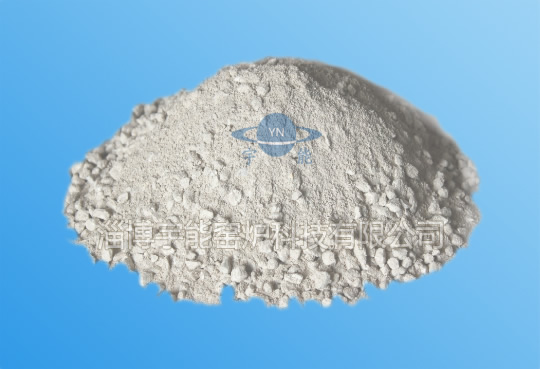Zibo Yunneng Kiln Technology Co. Ltd. Zibo Yunneng Kiln Technology Co. Ltd.
Free delivery samples
high quality assurance
Engineer's door-to-door guidance
lifelong technical support
Contact us+86159669653330086-533-5331887
Zibo Yunneng Kiln Technology Co. Ltd. Zibo Yunneng Kiln Technology Co. Ltd.
Free delivery samples
high quality assurance
Engineer's door-to-door guidance
lifelong technical support
Contact us+86159669653330086-533-5331887
Home -> News -> News -> Industry News ->
A few days ago, the Australian mining giant BHP Billiton Group Co. & ldquo; Deputy brand & rdquo; outh32 were listed on the stock exchanges of Australia, London and Johannesburg.
South32 is a separate asset of BHP Billiton Group. As a new entity, South32 has a more diversified portfolio of metals and mining, including aluminium, coal, nickel, manganese and silver. But it does not include two of BHP Billiton's most profitable assets: iron ore and oil and gas.
On the first trading day, South32 performed differently. According to foreign media reports, South32 opened at A$2.13 per share on the Sydney-based Australian Stock Exchange, then rose slightly to A$2.22 per share, and finally closed at A$2.05 per share. The closing price was lower than previously expected. According to statistics, at this price, the market value of South32 is only about A$11.3 billion (about US$9 billion).
But on the London Stock Exchange, South32 shares opened at 1.04 per share, then rose 3.9 per cent to 1.08 per share, and in Johannesburg, South32 shares rose 3 per cent.
At present, BHP Billiton Group has not announced its latest plan related to South32, except for the information of South32 stock price. But the imagination of the new company has been mentioned many times by the media and the public.
The Wall Street Journal recently praised South32's listing on the Australian Stock Exchange, which is the first time in the history of BHP Billiton Group Co. & ldquo; mixed listing & rdquo;.
South32 raised $11 billion on the day of its Australian listing, becoming Australia's fourth largest mining company after its stepparent BHP Billiton Group, Rio Tinto and precious metal producer Newcrest.
To put aside the above statement, another function of South32 may be: let the parent company BHP Billiton group focus more on the &ldquo of the market; essence ”
& The purpose of the split is to simplify our operations as BHP Billiton Group's assets become larger and more complex. & In Shanghai last year, BHP Billiton Group CEO Michael Magdalene said in an interview with the International Finance Daily, & ldquo; for this purpose, we set up a new company called South32, which will become relatively simple and efficient after the split. & rdquo;
He also told reporters that the decline in market prices means lower production costs, & ldquo; we believe that through this simplification of business, the newly established company and BHP Billiton Group itself will get better development & rdquo;.
In fact, since the middle of last year, with commodity prices falling steadily, not only BHP Billiton Group, but also many mining and energy companies have heard rumors of acquisition or spin-off.
For example, Hong Kong Letters recently quoted Australian media as saying that China's leading steel company Baosteel and CITIC Group had negotiated an increase in investment in FMG, an Australian iron ore producer, and submitted an application to the Australian Foreign Investment Review Board (FIRB) for investment in FMG, “ the relevant discussions only involved equity or increase. Hold, not all Acquisitions & rdquo;. FMG said yesterday that it was not aware of the matter and stressed compliance with disclosure principles. Baosteel and CITIC also did not confirm the investment.
Earlier, it was recognized that the mining and trading giant Glencore Chaoda also had the possibility of acquiring Rio Tinto, another major Australian miner.
Division, division and combination
South32 is the world's largest manufacturer of manganese ore and the world's largest silver ore. The split means that the merger of BHP, the predecessor of BHP Billiton Group, with Billiton, South Africa, in 2001 has since been largely separated.
BHP Billiton Group has developed with the development of market. At the beginning of this century, the global iron ore trade volume was just over 200 million tons, less than 20% of the global total in 2014. As one of the largest iron ore demand countries, China did not really participate in the annual international iron ore negotiations which began in 1981.
But iron ore giants who like to predict the future know that the iron ore market in the future will probably no longer be the ldquo defined in the 1950s and 1960s, and the sunset industry, rdquo, will just usher in opportunities.
In 2001, BHP Billiton Group, which was previously intent on acquiring Brazilian Caemi Mineracaoe Metalurgia S.A. (hereinafter referred to as & ldquo; CMM & rdquo); and ultimately cut off by Mitsui's property, acquired the company known as & ldquo; a pioneer in international mining industry, once known for its innovative and intensive operation, Billiden Mining; 。
It is understood that, at that time, BHP, the predecessor of BHP Billiton Group, quickly paid a premium of 20% to the total price of about 28 billion US dollars, & ldquo; finalized the & rdquo; Billion. The latter accepted BHP, the predecessor of BHP Billiton Group, in order to avoid being acquired by Anglo-American Resources Group, an old rival. After the merger, BHP Billiton Group's predecessor BHP holds 58% and Billiton holds 42%. This has created the position of & ldquo; the world's largest mining company, rdquo.
Relevant Product Display
 Ceramic fiber shaped structure
Ceramic fiber shaped structure
 Special artesian castable for coal injection pipe SF-20
Special artesian castable for coal injection pipe SF-20
 Aluminum silicate fibre blanket
Aluminum silicate fibre blanket
 Corundum mullite castable _ wear-resistant castable
Corundum mullite castable _ wear-resistant castable
Relevant information
Hotline